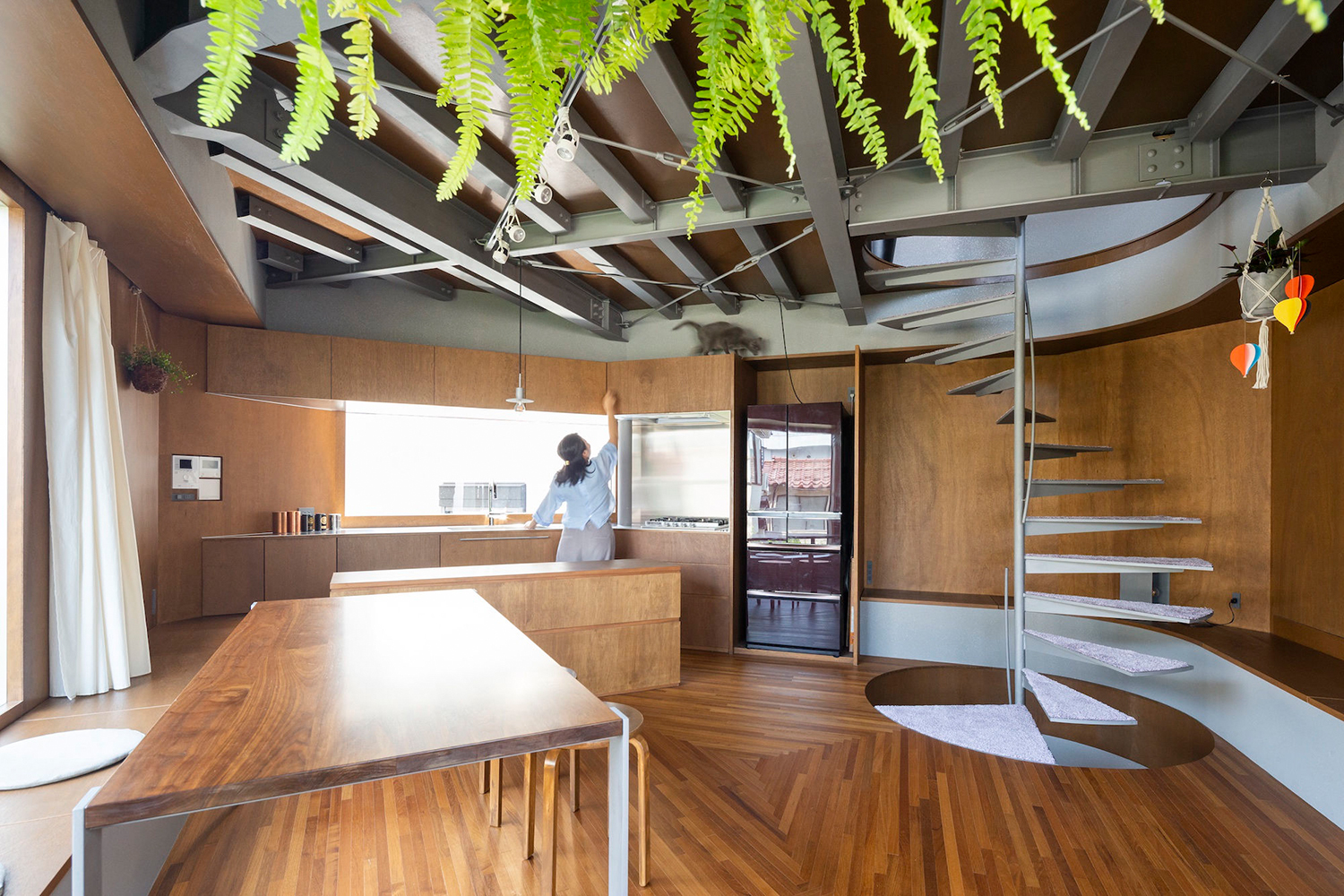Featuring bay windows on all sides, this combined residence and office has been designed by Takaaki Fuji + Yuko Fuji Architecture for a couple, their two children, and their two cats in Tokyo‘s Shibuya ward.
Architectural firm research into bay windows from around the world revealed that they take many forms and play many appealing roles, from a device for bringing in light to a type of furniture for sitting on to a decorative interface with the city. The project features bay windows on every floor and every side of the building, giving the residents many options for where to spend their time. In this tower, windows become sites for sitting, writing, sleeping, decorating, and many other activities.

Another important consideration was how to construct a positive relationship between the tower and the buildings surrounding it, most of which are single-family houses. The fate of new buildings on tiny urban lots is often to block the windows of surrounding buildings, leading to a sense of suffocating confinement for neighbors. Takaaki Fuji + Yuko Fuji Architecture solved the problem by slicing off the corners of the building, creating pockets of space in the four corners of the lot. For the tower’s residents, these pockets are little gardens, while for neighbors, the expanded space in front of their windows in a sense turns them into bay windows, too. Slicing off the corners resulted in an octagonal footprint. In many Asian countries, octagons are viewed as lucky according to feng shui. This shape is also extremely effective in reducing turbulence in the airflow around the building.

In addition, the studio analyzed the surrounding microclimate in order to reduce reliance on mechanical devices such as air conditioning as much as possible. By observing simulations of light, wind, and heat conditions that included surrounding buildings, they came up with three types of bay window: transparent windows to let in light; windows that function like openable walls, blocking light and heat but letting in breezes; and windows that function like fixed walls, blocking both heat and breezes. The design team distributed these three types of windows throughout the building in a way that maximized their efficacy in terms of light, ventilation, and heat. Nevertheless, at certain times of the year parts of the house have a high heat load. To address this issue, architects covered the exterior with carbonized cork, which is light, highly insulating, rot-resistant, and easy to work with. The carbonized cork serves as high heat-capacity insulation to lower the heat load.
The tower contains a variety of places whose environments vary according to season, time, floor, and orientation. The family’s two cats show them the place which has the perfect mix of sunlight, temperature, and breezes at any given moment.











